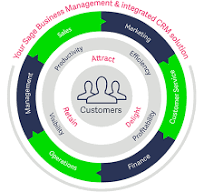Understanding the Importance of a Software Design Document
A software design document is a crucial blueprint that outlines the architecture, functionality, and components of a software project. It serves as a roadmap for developers, designers, and stakeholders to understand the project requirements and make informed decisions throughout the development process.
Key Components of a Software Design Document
The software design document typically includes:
- Overview: A high-level description of the project objectives and scope.
- Architecture: Detailed information on the system architecture, including components, modules, and their interactions.
- Functionalities: Description of the features and functionalities that the software will provide.
- Data Structures: Details on data models, databases, and data flow within the system.
- User Interface: Mockups or wireframes illustrating the user interface design.
- Testing Plan: Strategies for testing and quality assurance processes.
- Dependencies: External dependencies such as libraries or APIs used in the project.
The Benefits of Creating a Software Design Document
Creating a comprehensive software design document offers several advantages:
- Clarity: It provides clarity on project requirements and helps align all stakeholders on expectations.
- Risk Mitigation: Identifies potential risks early in the development process, allowing for proactive mitigation strategies.
- Easier Collaboration: Facilitates communication among team members by providing a common reference point for discussions.
- Maintainability: Helps future developers understand the system’s architecture and make updates or enhancements more efficiently.
- Cross-Functional Understanding: Enables non-technical stakeholders to grasp the project’s technical aspects more easily.
In Conclusion
A well-crafted software design document is an essential tool for successful software development projects. By investing time in creating this document upfront, teams can ensure smoother development processes, improved collaboration, and ultimately deliver high-quality software products that meet client expectations.
Understanding Software Design Documents: Key FAQs and Insights
- What is a software design document?
- Why is a software design document important in software development?
- What are the key components of a software design document?
- How detailed should a software design document be?
- Who is involved in creating a software design document?
- How does a software design document benefit the development process?
- What tools can be used to create a software design document?
- How often should a software design document be updated during the project lifecycle?
What is a software design document?
A software design document serves as a detailed blueprint outlining the architecture, functionality, and components of a software project. It provides a comprehensive overview of the project objectives, system architecture, features, data structures, user interface design, testing plan, and dependencies. This document acts as a roadmap for developers, designers, and stakeholders to understand the project requirements and make informed decisions throughout the development process. By documenting key aspects of the software project in one centralized location, the software design document facilitates clarity, collaboration, risk mitigation, maintainability, and cross-functional understanding among team members and stakeholders.
Why is a software design document important in software development?
A software design document is crucial in software development because it serves as a foundational guide that outlines the project’s architecture, functionalities, and components. This document provides clarity on project requirements, aligns stakeholders on expectations, and helps mitigate risks by identifying potential issues early in the development process. It facilitates collaboration among team members, enabling effective communication and a shared understanding of the project’s technical aspects. Additionally, a well-structured software design document enhances maintainability by aiding future developers in comprehending the system’s architecture for seamless updates and enhancements. Ultimately, investing time in creating a software design document upfront ensures smoother development processes and the successful delivery of high-quality software products that meet client needs.
What are the key components of a software design document?
When discussing the key components of a software design document, it is important to highlight that this document serves as a comprehensive blueprint for software development projects. The key components typically include an overview outlining project objectives and scope, detailed architecture descriptions encompassing system components and interactions, functionalities detailing the features to be implemented, data structures specifying data models and flow, user interface designs, testing plans for quality assurance, and dependencies on external resources like libraries or APIs. These components collectively provide a structured framework for developers, designers, and stakeholders to understand project requirements and ensure successful execution throughout the software development lifecycle.
How detailed should a software design document be?
When considering the level of detail in a software design document, it is essential to strike a balance that provides sufficient information without overwhelming the readers. The document should be detailed enough to clearly communicate the system architecture, functionalities, data structures, and other key aspects of the project. It should also include diagrams, mockups, and descriptions that help stakeholders understand the project requirements and make informed decisions. However, it is crucial to avoid unnecessary complexity or excessive technical jargon that may hinder comprehension. Ultimately, the level of detail in a software design document should be tailored to the specific needs of the project and its audience, ensuring that it effectively serves as a comprehensive guide for all involved parties.
Who is involved in creating a software design document?
In the process of creating a software design document, various stakeholders play crucial roles. Typically, the team involved in crafting this document includes software architects, developers, system analysts, project managers, and sometimes quality assurance professionals. Software architects are responsible for defining the overall system architecture and design principles. Developers contribute their expertise in detailing the technical aspects and implementation strategies. System analysts help in translating business requirements into technical specifications. Project managers oversee the entire process to ensure alignment with project goals and timelines. Collaboration among these diverse roles ensures that the software design document accurately captures the project’s requirements and sets a clear direction for successful development.
How does a software design document benefit the development process?
A software design document benefits the development process by serving as a comprehensive guide that outlines the project’s architecture, functionalities, and requirements. It provides developers with a clear roadmap to follow, ensuring that they understand the project scope and objectives. By detailing the system’s design and components, the document helps streamline the development process, reduce ambiguity, and facilitate effective collaboration among team members. Additionally, the software design document aids in risk mitigation by identifying potential issues early on and guiding developers in making informed decisions throughout the development lifecycle. Ultimately, having a well-defined software design document leads to more efficient development cycles, improved code quality, and successful project outcomes.
What tools can be used to create a software design document?
Various tools can be used to create a software design document, depending on the preferences and requirements of the team. Popular options include Microsoft Word, Google Docs, and other word processing software for creating text-based documents. For visual representations and diagrams, tools like Microsoft Visio, Lucidchart, draw.io, or online whiteboarding platforms such as Miro or Mural are commonly used. Integrated development environments (IDEs) like IntelliJ IDEA or Visual Studio also offer features for documenting code architecture and design. Additionally, project management tools like Jira or Trello may have built-in templates for creating and tracking software design documents within the project workflow. Ultimately, the choice of tool should align with the team’s collaboration needs, project complexity, and preferred documentation style.
How often should a software design document be updated during the project lifecycle?
During the project lifecycle, the frequency of updating a software design document can vary depending on the project’s complexity, scope changes, and team dynamics. It is generally recommended to update the document whenever there are significant modifications to the system architecture, functionalities, or dependencies. Regular reviews and updates may be necessary after key milestones, such as prototype development or testing phases, to ensure that the document remains aligned with the evolving project requirements. Effective communication among team members is essential to identify when updates are needed and to maintain a comprehensive and accurate software design document throughout the project lifecycle.



